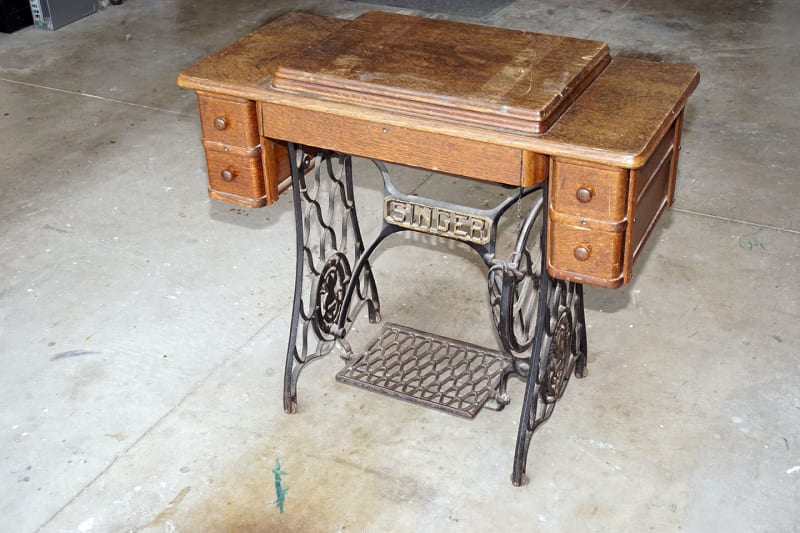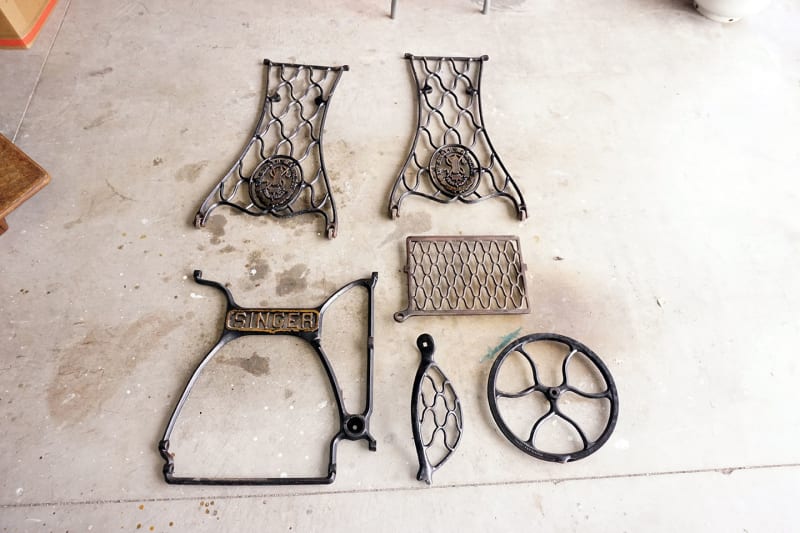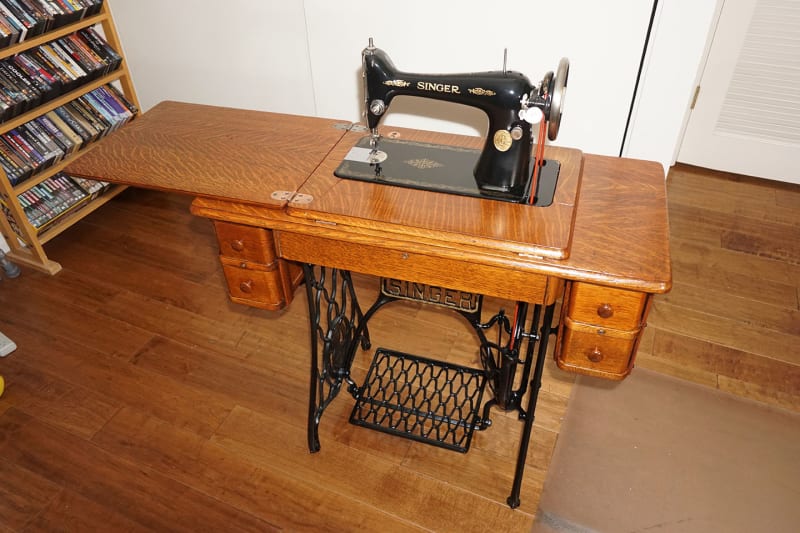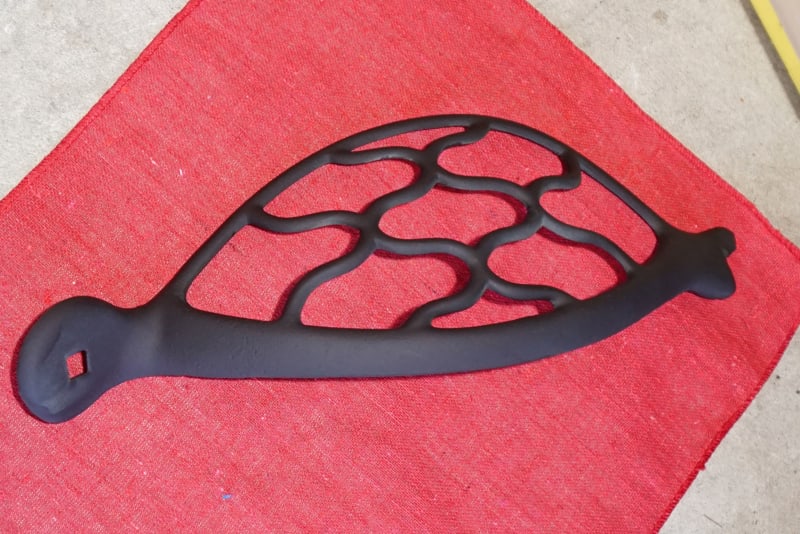My understanding is that wrought iron is still in demand for artistic uses or in restorations. Now while wrought iron might be more resistant to long-term corrosion, it does rust and almost immediately, if the conditions are right, just that once you get that layer of rust, it pretty much stops.
Six years ago I did a full restoration of a Singer 66-4 sewing machine which was manufactured in 1927 (for a more comprehensive review of the restoration effort, please visit
Singer Sewing Machine Restoration).
That being said, the lower framework of the sewing machine base was made of wrought iron, as seen in this photo (taken before I started the restoration):
May 2016 (Sony a6000)
And here were all of the pieces before I took them to the sandblasting shop to get all the old paint removed:
May 2016 (Sony a6000)
When I went to pick-up the sandblasted parts, I was told that I should get at least one coat of paint on them within 24 hours, otherwise they would start to rust. I put my first coat of primer on them before I went to bed that night as I was taking no chances.
BTW, this is what the fully restored sewing machine looked like when I was finished (as I said, if you want a more detailed review of the entire restoration project, click on the link I posted above):
July 2016 (Sony a6000)
John R. Baker, P.E. (ret)
Irvine, CA
Siemens PLM:
UG/NX Museum:
The secret of life is not finding someone to live with
It's finding someone you can't live without



